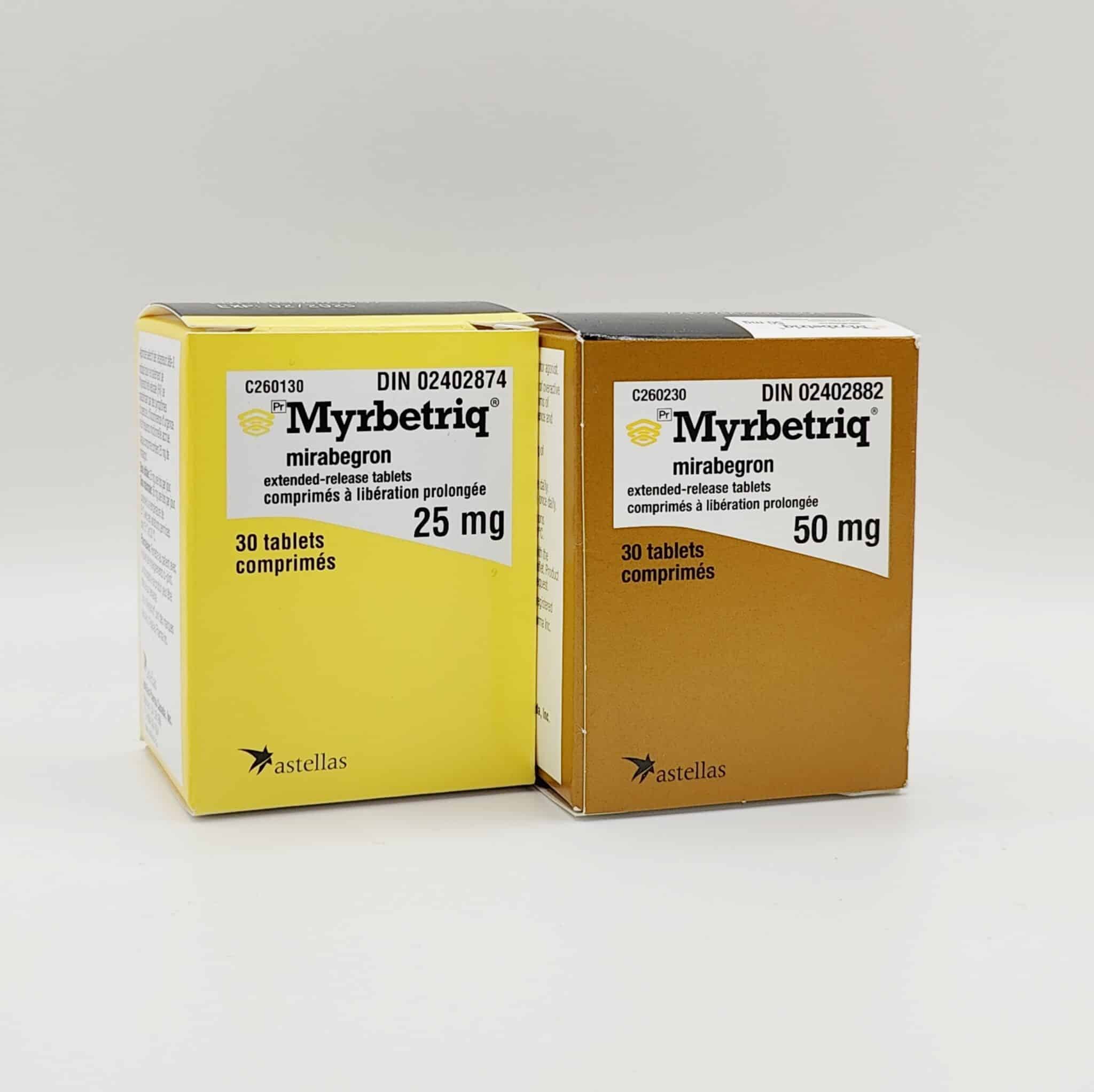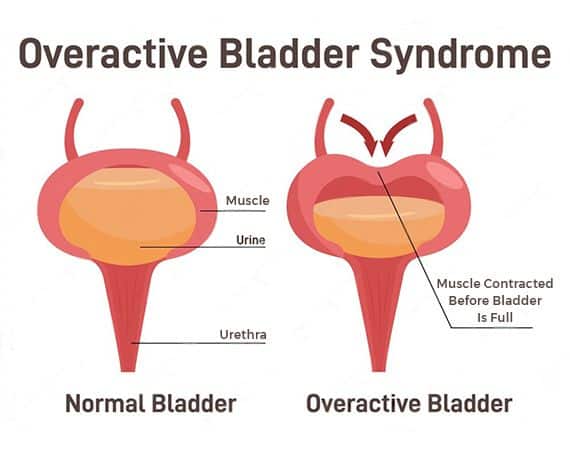Overactive Bladder: Top Treatments to Take Back Control of Your Life
Overactive Bladder: Top Treatments to Take Back Control of Your Life
- Jason K
Overactive bladder (OAB) is a common condition that affects millions of people worldwide, characterized by a sudden and frequent urge to urinate that can disrupt daily life. For many, OAB can lead to frustration, embarrassment, and a reduced quality of life. Fortunately, there are numerous treatment options, ranging from lifestyle changes to advanced therapies, that can help manage the condition. This comprehensive guide covers everything you need to know about OAB, including its causes, symptoms, and treatments, with a special focus on medications like mirabegron (Myrbetriq).
What is Overactive Bladder?
Overactive bladder refers to a condition where the bladder’s muscles contract involuntarily, causing a frequent and urgent need to urinate. This can happen even when the bladder isn’t full. While OAB is more common in older adults, it can affect people of all ages and genders.
Key Symptoms:
- Urinary urgency: A sudden, intense need to urinate.
- Frequency: Needing to urinate more than 8 times a day.
- Incontinence: Leaking urine due to the urgency.
- Nocturia: Waking up frequently at night to urinate.
Causes of Overactive Bladder
OAB can result from several factors, including:
1. Neurological Disorders: Conditions like multiple sclerosis, Parkinson’s disease, or spinal cord injuries can disrupt the nerve signals that control bladder function. These disruptions may cause the bladder to contract unexpectedly, leading to frequent and urgent urination.
2. Bladder Muscle Instability: When the detrusor muscle in the bladder becomes overactive, it contracts even when the bladder isn’t full. This instability can result in the sudden urge to urinate, often accompanied by leakage.
3. Aging: As we age, the bladder’s capacity and elasticity naturally decrease, making it harder to hold urine for extended periods. Additionally, aging can weaken pelvic floor muscles, further contributing to bladder control issues.
4. Hormonal Changes: Hormonal fluctuations, particularly in women during menopause or pregnancy, can impact bladder control. Decreased estrogen levels during menopause can lead to thinning of the bladder lining and urethra, increasing susceptibility to OAB symptoms.
5. Underlying Health Conditions: Chronic conditions such as diabetes can damage nerves that regulate bladder function, while urinary tract infections may irritate the bladder and mimic OAB symptoms. Obesity can also increase abdominal pressure on the bladder, intensifying urgency and frequency.
By understanding these underlying causes, patients and healthcare providers can better tailor treatment plans to address the specific factors contributing to OAB.
Lifestyle Changes and Home Remedies for OAB
For mild cases, lifestyle adjustments can make a significant difference in managing symptoms and improving bladder health. Incorporating these strategies into your daily routine can help reduce urgency, frequency, and discomfort:
Diet Modifications: Avoid foods and beverages known to irritate the bladder, such as caffeine, alcohol, spicy foods, carbonated drinks, and acidic fruits like oranges or lemons. Replace these with bladder-friendly options such as water, herbal teas, and non-acidic fruits like pears or bananas.
Bladder Training: Gradually increasing the time between bathroom visits can help improve bladder control and reduce the frequency of urination. Start by extending the interval by 15 minutes and slowly increase it over time. Setting a consistent schedule for bathroom breaks can also help retrain your bladder.
Pelvic Floor Exercises: Kegel exercises strengthen the muscles that support bladder control and can reduce episodes of leakage. Practice tightening the pelvic floor muscles for 5-10 seconds at a time, repeating this several times a day. Over time, this can enhance muscle tone and improve bladder function.
Hydration Management: Drink adequate fluids throughout the day to stay hydrated, but avoid drinking large amounts at once or right before bed. Sipping water in small amounts can help prevent overloading the bladder while still maintaining proper hydration. Additionally, limit fluid intake in the evening to reduce nighttime bathroom trips (nocturia).
By adopting these lifestyle changes and home remedies, many individuals with OAB can experience a noticeable improvement in their symptoms and overall quality of life.
Medications for Overactive Bladder
When lifestyle changes aren’t enough, medications can help relax the bladder and reduce symptoms.
1. Mirabegron (Myrbetriq)
Mirabegron, sold under the brand name Myrbetriq, is a beta-3 adrenergic agonist that works by relaxing the bladder muscles, allowing it to store more urine and reduce the urgency to urinate.
Benefits of Myrbetriq:
- Fewer side effects compared to older medications.
- Does not cause dry mouth, a common issue with anticholinergic drugs.
- Suitable for patients who cannot tolerate anticholinergics.
Common Side Effects:
- Increased blood pressure.
- Mild headache or dizziness.
Discuss with your healthcare provider whether Myrbetriq is right for you, especially if you have high blood pressure or other underlying conditions.
2. Anticholinergics:
Drugs like oxybutynin and tolterodine work by blocking nerve signals that cause bladder muscle contractions.
- Pros: Effective for many patients.
- Cons: Side effects like dry mouth, constipation, and blurred vision can occur.
Advanced Treatments for Overactive Bladder
For patients who don’t respond well to medications or lifestyle changes, advanced treatments can provide significant relief and improve quality of life. These options are typically recommended after other therapies have been tried:
1. Botox Injections:
Botox (onabotulinumtoxinA) can be injected directly into the bladder muscles to reduce spasms and improve bladder control. By temporarily paralyzing overactive bladder muscles, Botox helps decrease urinary urgency and frequency. Results typically last several months, but repeat treatments are necessary to maintain effectiveness. This procedure is minimally invasive and performed in a doctor’s office or outpatient setting.
2. Sacral Nerve Stimulation:
A small device, similar to a pacemaker, is implanted near the sacral nerve to send mild electrical signals. These signals help regulate bladder activity and improve control by reducing overactive bladder contractions. Sacral nerve stimulation is particularly useful for patients with severe symptoms who have not found relief through other treatments. This long-term solution requires a surgical procedure and periodic adjustments to the device.
3. Percutaneous Tibial Nerve Stimulation (PTNS):
PTNS is a minimally invasive outpatient procedure that uses electrical stimulation to calm overactive bladder activity. A thin needle is inserted near the tibial nerve in the ankle, and gentle electrical impulses are sent to the bladder through the nerve pathways. This treatment requires multiple sessions over several weeks but offers a non-surgical alternative for patients seeking relief.
4. Surgical Options:
In severe cases where other treatments have failed, surgical interventions may be considered. Procedures like bladder augmentation, which increases the bladder’s capacity, or urinary diversion, which reroutes urine flow, can provide significant relief. These surgeries are typically reserved for patients with debilitating symptoms and are performed by specialized urologists.
Advanced treatments offer hope for patients with persistent OAB symptoms, providing tailored solutions to regain control and improve day-to-day life. Always consult your healthcare provider to determine which option is best suited to your needs.
FAQs
1. How common is overactive bladder?
OAB affects up to 30% of men and 40% of women at some point in their lives, though many cases go undiagnosed.
2. Can OAB be cured?
While OAB may not always be “cured,” its symptoms can be effectively managed with a combination of treatments.
3. Are there natural treatments for OAB?
Pelvic floor exercises, dietary changes, and weight management are natural ways to improve symptoms.
4. Is surgery necessary for OAB?
Surgery is usually a last resort for severe cases that don’t respond to other treatments.
5. Can Myrbetriq be taken with other medications?
Myrbetriq can interact with certain drugs, so it’s essential to inform your doctor about all medications you’re taking.
Reference:
Bladder Control: Managing Urinary Incontinence With Medication


